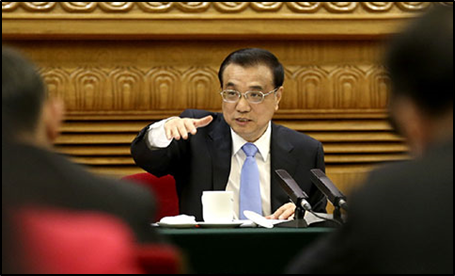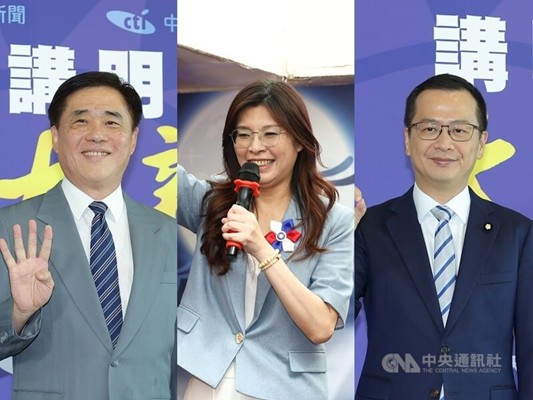
“State Companies Advance and Private Firms Retreat” in China’s Bid to Resuscitate the Economy
“State Companies Advance and Private Firms Retreat” in China’s Bid to Resuscitate the Economy
Introduction: Beijing’s Plans for Stimulus Spending and “Six Stabilizations”
After the bombshell announcement that the Chinese economy contracted by an unprecedented 6.8 percent in the first quarter of this year, the Xi Jinping administration has vowed to do whatever it takes to resuscitate growth and to stabilize employment. “We must adroitly and accurately materialize all measures to fight the epidemic and to resuscitate industry and production so that the targets and goals of this year’s economic and social development will be realized,” said Xi during an early April trip to Zhejiang (People’s Daily, April 1).
In a mid-April statement, the Politburo said it would prioritize “boosting domestic demand, encouraging consumer spending and increasing public spending.” The ruling committee said the country would raise its fiscal deficit ratio and issue special government bonds. It also urged the central bank to use tools, including interest rate cuts, to support growth (SCMP, April 17). This followed from comments by People’s Republic of China (PRC) Premier Li Keqiang in March, who reiterated that China must press forward the “Six Stabilizations” (六稳, Liu Wen): “stabilize employment, stabilize finances, stabilize foreign trade, stabilize oreign investment, stabilize investment and stabilize expectations” (PRC Government, March 3; Xinhua, March 3).
At the height of the Wuhan epidemic in January and February, the Xi administration had already asked regional administrations to come up with plans to resuscitate the economy. According to the official 21st Century Economic Herald, 13 provinces and directly administered cities (Beijing, Hebei, Shanxi, Shanghai, Heilongjiang, Jiangsu, Fujian, Shandong, Henan, Yunnan, Sichuan, Chongqing and Ningxia) had by March announced 10,326 major projects. Of these, eight provinces and cities had unveiled $4.8 trillion (33.83 trillion yuan) of plans. Another eight had disclosed that $395 billion (2.79 trillion yuan) would be spent this year alone. Furthermore, according to the First Financial Daily’s tally of large-scale regional projects, eight major provinces have announced investments close to $3.5 trillion (25 trillion yuan) (Apple Daily, March 2; Reportrc.com, March 9).
How Will This Be Funded, and Who Receives the Money?
Two weighty questions have emerged. The first one is: where does all the money come from? New bank lending in China rose sharply to $405 billion (2.85 trillion yuan) in March, which was three times more than February’s $128.2 billion (905.7 billion yuan) (Reuters, April 10). The spike in investment has coincided with a cut in taxes. Big enterprises are also allowed to cut down on their contributions to social welfare and unemployment benefits. China’s total social debt is estimated to be at least three times that of gross domestic product (GDP). One view among specialists in Chinese finance is that Beijing may have to consider switching to some form of quantitative easing (QE) and other unorthodox methods to boost credit (Peng Pai News, December 26, 2019; Reuters, April 8). This is despite statements by Premier Li and other senior officials that the People’s Bank of China will not emulate the U.S. government in implementing QE measures.
The second, and equally significant, issue is the phenomenon of guojin mintui (国进民退 / literally, “state advances, people retreat”). Guojin mintui means that state-owned-enterprises (SOEs) receive preferential treatment to increase their role in the economy, while private firms are disadvantaged and pushed by the wayside. In order to speed up the resuscitation of the economy, SOEs enjoy special privileges—such as reduced interest rates from banks, reduced electricity bills, and special orders from the government. To boost employment, about 20,000 directly or indirectly centrally controlled enterprises are busy making face masks, medicines, medical equipment, steel, and other heavy machinery. Few private firms enjoy such privileges (WSJ Chinese edition, March 23.)
Even more detrimental to the non-state sector—which consists mainly of small—and medium-sized enterprises—is that they don’t have the capacity to win contracts for infrastructure construction and modernization. A March report by the official Economic Reference News noted that the party central authorities and the State Council would take advantage of the new wave of investments to modernize infrastructure (particularly in central and coastal cities) in cutting-edge areas such as: 5G Internet, mass data, cloud computing, robotics, electric cars, new materials, green technology, and different types of artificial intelligence (AI). So far, multiple cities and provinces—including Beijing, Shanghai, Hebei, Shandong, Shanxi, Jiangsu, Fujian, and Yunnan—have unveiled industrial, commercial, and information and communications technology (ICT) projects based on 5G platforms (China.com.cn, March 10). Additionally, according to the official Fortune Insight website, seven provinces in the mainland are ready to invest $3.5 trillion (25 trillion yuan) in new infrastructure development, underpinned by 5G networks and other cutting-edge technologies (Fortune Insight, March 2).
Such moves are reminiscent of the $566.3 billion (4 trillion yuan) investment that then-Premier Wen Jiabao approved in late 2008 to counter the impact of the global financial crisis on China. Much of this was used to lay down new infrastructure: ranging from a national high-speed railway network to subways, airports, highways and computer systems (Phoenix TV, September 6, 2010; Finance.sina.com.cn, June 23, 2009). Now the emphasis is on laying down 5G networks and other 21st-century infrastructure, which will involve billions of yuan in outlay. The guojin mintui phenomenon has been even more entrenched.

Another aspect of the new economic order is renewed economic activities along the One Belt One Road, also called Belt and Road Initiative (BRI). According to the People’s Daily, during January and February China exported a gargantuan $185.5 billion (1.31 trillion yuan) of goods and services to BRI countries—an increase of 1.8 percent—which was 11.4 percent higher than China’s overall exports to other (i.e., non-BRI) countries (Finance.people.com, March 10). The PRC media emphasized that Chinese BRI-related infrastructure outlays would continue unabated despite the pandemic. The latest statistics show that Chinese enterprises in the first quarter of 2020 invested $4.2 billion in non-financial sectors in 52 countries along the OBOR, representing a 2.4 percent increase over the same period last year (One Belt One Road Net, April 23). It is well-known that most Chinese private firms—except those with special connections with the leadership, such as Huawei—lack the means to bid for multi-million yuan contracts along the One Belt One Road.
Conclusion: Stimulus Funding Will Likely Result in “The State Advancing”
As a quasi-Maoist who believes in the party-state’s control of the economy, Xi Jinping has vowed to render SOEs “stronger, better and larger” (SCMP, September 28, 2018; People’s Daily, July 19). However, private firms contribute more than 50 percent of taxation and account for 90 percent of new jobs created. Since 2019, SOEs have used different means to take over lucrative non-state firms. For example, at least 44 listed private companies during this period have been absorbed by SOES in deals involving $31.2 billion (220 billion yuan) (China Times, April 3). So many small- and medium-sized enterprises run the risk of going under that, in late March, Premier Li authorized medium and small-scale banks to hand out an additional $141.6 billion (1 trillion yuan) in loans mainly to non-state-sector firms. However, this alone is hardly enough to enable private firms to compete with gargantuan SOEs (Oriental Daily News, March 31).
Reinforced state economic planning could also militate against trade talks with the Donald Trump administration. After reaching a “Phase One” agreement on tariffs in January, the two administrations were to begin talking about economic governance systems. Trump has reiterated that the Chinese economy must be market-driven, and not subject to direction from party and state. Washington is particularly against the overwhelming domination of the economy by SOEs and SOE conglomerates (SCMP, January 16; The Diplomat, January 10).
The perspective among the top leadership in Beijing is very different. Apart from reviving the economy, Xi seems eager to take advantage of the war against COVID-19 to further centralize power in his own hands. Guojin mintui is but one aspect of this re-centralization drive. Since February, a number of protégés and cronies of Xi, including the former mayor of Shanghai Ying Yong (应勇), have been promoted (China Brief, February 28). The police-state apparatus has been beefed up. Outspoken intellectuals, whistle-blowing medical personnel, and even underground Christians have been suppressed (China Brief, April 1). Given the unique contribution of the private sector to the economy, the guojin mintui trend, just like other aspects of centralization, could have a detrimental long-term impact on the country.
Dr. Willy Wo-Lap Lam is a Senior Fellow at The Jamestown Foundation and a regular contributor to China Brief. He is an Adjunct Professor at the Center for China Studies, the History Department, and the Master’s Program in Global Political Economy at the Chinese University of Hong Kong. He is the author of five books on China, including Chinese Politics in the Era of Xi Jinping (2015). His latest book, The Fight for China’s Future, was released by Routledge Publishing in July 2019.


